Your Cart is Empty
🙏 La livraison est offerte sur tous vos achats ! 🙏

Buddhism is full of symbols. Although the Buddha lived in the 6th century BC, according to tradition, statues of the Buddha and Buddhist symbols did not appear in India only around the 3rd century BC Since then, these symbols have represented certain aspects of the Buddha and conveyed the fundamentals of Buddhism. As Buddhism spread to other countries, different Buddhist traditions passed on their teachings through the use of various symbols, which is considered to be the key to the survival of Buddhism.
These symbols can invoke inner peace and contentment or awaken deeper states of mind in those who see them. Each symbol is unique and has a different meaning or conveys a different message. It can inspire us to realize our greatest aspirations, values and potentials. Here are some of the most inspiring Buddhist symbols and their meanings.
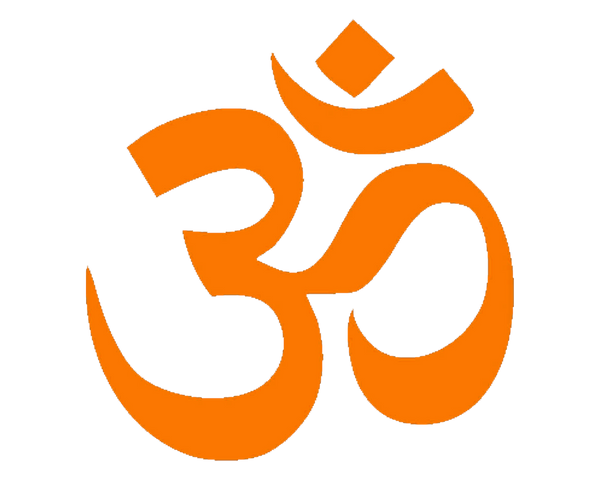
Om, also written as Aum, is a mystical and sacred syllable that originated in Hinduism, but is now common to Buddhism and other religions. In Hinduism, Om is the first sound of creation and symbolizes the three stages of existence: birth, life and death.
The most well-known use of Om in Buddhism is found in Om Mani Padme Hum, the "Great Six Syllable Luminous Mantra" of the Bodhisattva of Compassion, Avalokiteśvara. By chanting or looking at the syllables, we invoke the Bodhisattva's compassion and instill in him his qualities. AUM (Om) consists of three distinct letters, A, U and M. They symbolize the body, mind and speech of the Buddha; "Mani" designates the way of teaching; "Padme" the wisdom of the way, and "hum" means the wisdom and the way that leads to it, as Buddhism explains.
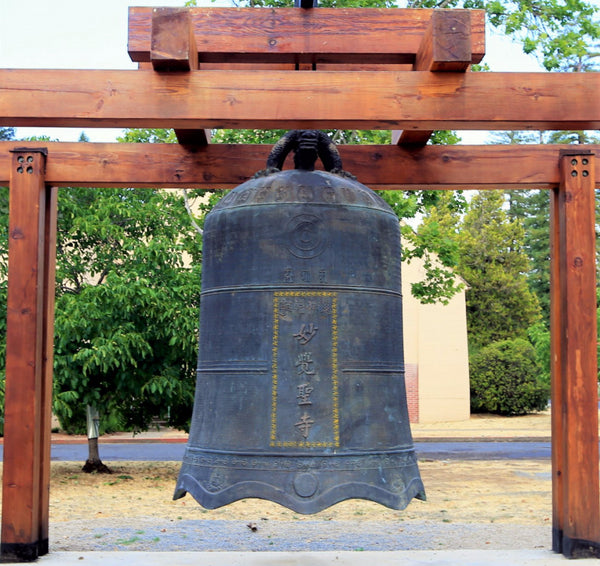
Since Antiquity, temple bells have invited monks and nuns to meditation and ceremonies. The gentle ringing of a bell during chanting helps devotees focus on the present moment and free themselves from daily worries. The sound of the bell can enhance the feeling of peace and calm. This is why windbells are often hung from the eaves of stupas and temples to create spaces of peace and meditation, with their tinkling.
The ringing of the bell is a symbol of the voice of the Buddha. It also represents wisdom and compassion, and is used to call on heavenly gods for protection and to ward off evil spirits. Many old temples have entry bells that must be rung before entering.
Bells come in a wide range of sizes and styles.

The Buddha awakened under the shelter of a sacred fig tree called the bodhi tree. Since then, the bodhi tree has become a symbol of Buddha's enlightenment, and the heart-shaped leaf a symbol of the enlightenment potential that resides within each of us.
Bodhi is a Sanskrit word which means "awakening". The term has two meanings for Buddhists. It designates both the fig tree, ficus religiosa, under which Siddhārtha Gautama awakened and any tree under which all Buddha awakened.
The bodhi leaf is heart-shaped and radiates energy luminous and singing. She talks about playfulness and thoughtfulness. The bodhi tree is still found in Bodh Gaya, where the Buddha was awakened, as a descendant of the one under whom the Buddha sat centuries ago. See Under the Bodhi Tree.
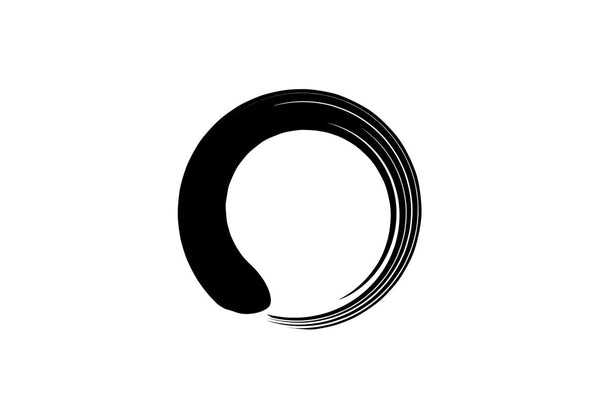
In Zen Buddhism, ensō is a sacred symbol often referred to as "The Circle of Lights" It is a circle that is drawn by hand in one or two brushstrokes to express a time when the mind is free to let the body create. Some artists draw ensō as an open circle, while others complete the circle.
At first, ensō may appear as a roughly drawn circle, but it symbolizes many things: strength, elegance, the universe, our true and intimate self, the beauty in imperfection and the oneness of all things in life. It also symbolizes the perfect meditative state or enlightenment.
Ensō is a visual expression of the Heart Sutra. Form is emptiness and emptiness is form - a circle in which everything is contained or also excluded by its limits.
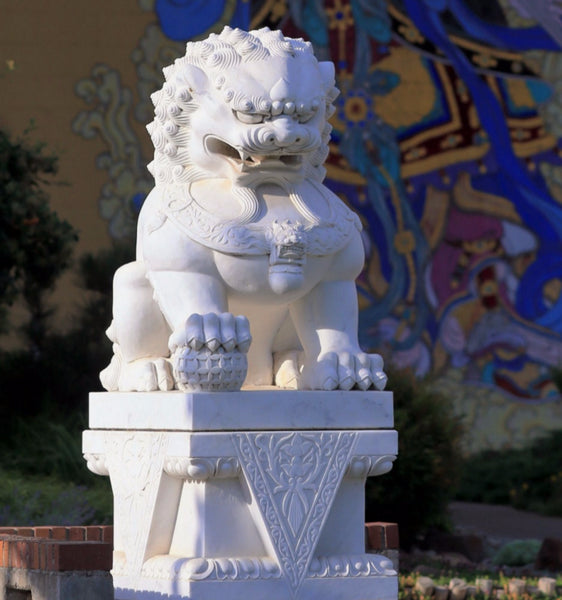
For thousands of years, the lion has been a symbol of royalty, strength and bravery. For these reasons, the lion symbolizes the royal origins of Buddha Shakyamuni, as well as his courage to challenge injustice and alleviate human suffering. He is called "Lion of the Shakyas" in recognition of the power of his teachings. The voice of the Buddhas is often called the "Lion's Roar", which roars the Dharma for all to hear. The symbolic meaning of the lion's roar reminds us to strive with the brave heart of the lion king and overcome the obstacles in our path, thereby creating happiness and harmony in our lives and in society.
Lions serve as guardians, represented in pairs at the entrance to shrines, temples and monasteries. They are the symbol of the bodhisattvas, the "lions of Buddha", and are found in their role as protectors of the dharma who support the throne of the Buddhas and Bodhisattvas and serve as their steed. Mañjuśrī, the bodhisattva of great wisdom rides a lion, symbolized in the Floral Ornament Sutra (Avatamsaka).
See our article on Buddhist teachings on animals.
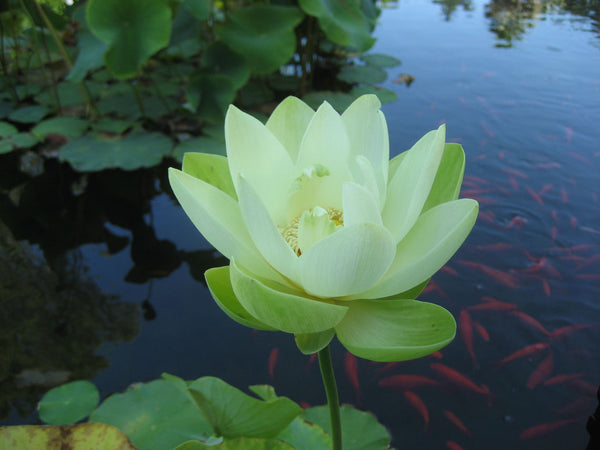
In Buddhism, the lotus is a symbol of the awakening of the Buddha and a reminder that all beings have the same potential to achieve enlightenment. The lotus grows in the mud and rises to the surface of the water to bloom in beauty and purity, just as man can develop the virtues of a Buddha and rise above desire and the dedication to revealing the true nature.

The symbol of the lotus flower represents the stages of the spiritual path. For example, a closed button is synonymous with the start of the journey. A partially open flower indicates walking on the path. A fully blossomed flower signifies the end of the journey - enlightenment.
The lotus blooms profusely in all aspects of Buddhist art and literature in all cultures. One of the most important representations of the lotus in literature is the Lotus Sutra.
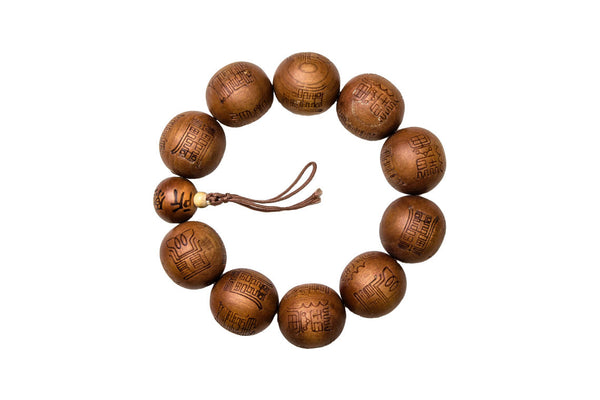
A mala usually consists of 9, 21, or 108 beads strung on a string. The pearl is not alone, but it is connected with all the other pearls to form a whole strand. As individuals, we may think that we are apart, but we are not. We are connected to each other, to our family, to the world. We are all living beings together. One cannot exist without the other. This connection to life, we call it the nature of Buddha.

The idea of mala is to move one bead at a time, focusing on a breath, a mantra or the name of a Buddha, such as in the Amitabha Sutra. This method creates positive spiritual energy.
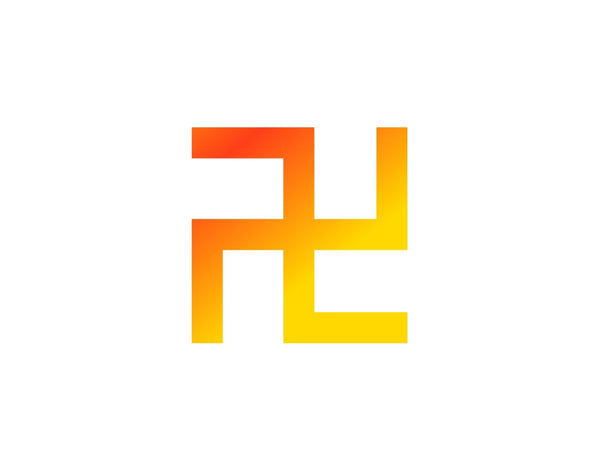
The ancient swastika is one of the oldest symbols on Earth It is a symbol of peace, luck and positivity, predating the Indus Valley civilization and found in the art of many cultures: Egyptians, Romans, Celts, Greeks and Native Americans. It is also used in Vedic mathematics. The Sanskrit translation means "to be good" or "to be with the higher self".
In Buddhism, the swastika symbolizes the seal of the heart of the Buddha and contains within it the whole mind of the Buddha. It can be seen imprinted on the body, palms, chest or feet of Buddha images. In China, the swastika stands for the number ten thousand (wan), which means infinity and auspices.
This is the same swastika that the Nazis spun counterclockwise a watch and made it a symbol of discrimination and slaughter. With the arrival of Buddhism in the West, however, the symbol regains its original auspicious meaning.
Discover the history of the Swastika symbol.
 The vajra is a kind of combat club used as a ritual object to symbolize both the properties of a diamond (indestructibility) and of a thunderbolt (irresistible force). It is made of brass or bronze, with four teeth at each end forming a lotus staff that indicates peace or ends with a sharp point and becomes a weapon of anger with which to stab. The vajra is used in Chinese and Tibetan Buddhism. In Tibetan Buddhism, it is almost always associated with a bell during rituals.
The vajra is a kind of combat club used as a ritual object to symbolize both the properties of a diamond (indestructibility) and of a thunderbolt (irresistible force). It is made of brass or bronze, with four teeth at each end forming a lotus staff that indicates peace or ends with a sharp point and becomes a weapon of anger with which to stab. The vajra is used in Chinese and Tibetan Buddhism. In Tibetan Buddhism, it is almost always associated with a bell during rituals.
In Buddhism, the vajra has three meanings: durable, luminous, and capable of cutting. Like the diamond, the vajra breaks all underhand influences, but it is itself indestructible, as the Vajra (diamond) Sutra explains. Like lightning, its light breaks the darkness. Like śūnyatā (the nature of reality), it cuts off people's afflictions and misguided opinions.

The hamsa is an ancient symbol of the Middle East that has diverse meanings across cultures. Nevertheless, it is considered in all faiths as a protective talisman that brings good fortune, health and happiness.
Find jewelry with his effigy on the boutique Reflet Oriental.

The hamsa is mainly used to protect its owner from the "Ayin Ha'ra", also known as the "eye of the devil" . The hamsa ward off all potential negative forces, the most common being the envious stares of those with bad intentions. The oldest use of the hamsa dates back to ancient Mesopotamia (present-day Iraq) where it was worn as an amulet to protect against the evil eye.
In Buddhism and Hinduism, hamsa takes on a very different meaning. For Hindus and Buddhists, the hamsa represents the chakras, the five senses and their associated mudras (hand gestures) which redirect the flow of energy throughout the body.
Comments will be approved before showing up.